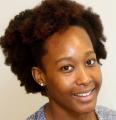
PROTECTING Salary Brook Valley is important to local authorities in north Essex, residents heard during the final day of the Local Plan public examination.
Colchester Council officer Ian Vipond said the authorities were “broadly in agreement” with several speakers, including Sir Bob Russell and councillor Tim Young, who passionately justified why it should be preserved.
But Mr Vipond and others grappled with the extent to which this is defined at this stage in the draft Local Plan process.
He said: “All of the comments which have been made today are exactly the sort of comments which should be made on the next development plan document.
“We do recognise the importance of both Home Wood and the adjoining Churn Wood, and they are indicated in the issues and options as being protected.

Ian Vipond, of Colchester Council
“Arbitrary comments like 1.5km buffer zones [from the Greenstead and Longridge settlements to the start of the new development] are not, I don’t think, appropriate in the context of this plan.”
The draft local plan sets out guidance for how the borough will be developed.
Colchester councillor Julie Young, who wants no houses south of the A133, said it is imperative for a “green buffer zone” to surround the entire development because it is a “community in its own right”.

Julie Young pictured in Greenstead
Prof Ted Benton, of Colchester Natural History Society, agreed with the Labour councillor’s call for protected land to be clearly designated from the outset.
Mrs Young said: “This is in order to preserve the rich and unique biodiversity of the Salary Brook landscape, to avoid coalescence and maintain the unique identity of all settlements.
“Any development should be of such a nature which is not visible above the tree line from Greenstead and Longridge Park, the settlements closest to the new garden community.
“The whole area should be adopted and officially protected as a country park to safeguard it against future development and speculative planning initiatives, and preserve it for the continued enjoyment of residents of east Colchester and those of the new garden community.”
Number of homes 'unsound'
THE idea the number of homes in the new town proposed for the Colchester and Braintree border is being driven by secondary schools was met with scepticism.
William Sunnocks, of Campaign Against Urban Sprawl in Essex, called it “unsound” to determine the minimum size of the development - 15,000 homes at the moment - in this way.
Urban planning consultant Lawrence Revill explained this is the “determining factor” as one secondary school generally serves between 8,000 and 10,000 homes.
Mr Revill also said decisions on the strategic road network would have an influence over the land developed on.
He said: “We’re of the belief it wouldn’t be an inappropriate location, in town planning terms, for development smaller than that which would generate a community served by at least two secondary schools, which automatically indicates a scale of between 15,000 and 18,000.”
Planning inspector questions achievable housing numbers

Planning inspector Roger Clews
THE range of homes proposed to be built as part of the Colchester Braintree garden community will be “refined”, the inquiry heard.
Reading the North Essex Authorities’ statement, planning inspector Roger Clews said the 15,000 to 24,000 figure would be altered “following further master-planning work”.
He questioned council representatives on whether they would be able to achieve the top end of the range.
He said: “I have to have confidence the top end of the range is achievable.
“If you can’t achieve the top end of the range, it’s not one that ought to be endorsed.”



Comments: Our rules
We want our comments to be a lively and valuable part of our community - a place where readers can debate and engage with the most important local issues. The ability to comment on our stories is a privilege, not a right, however, and that privilege may be withdrawn if it is abused or misused.
Please report any comments that break our rules.
Read the rules hereLast Updated:
Report this comment Cancel